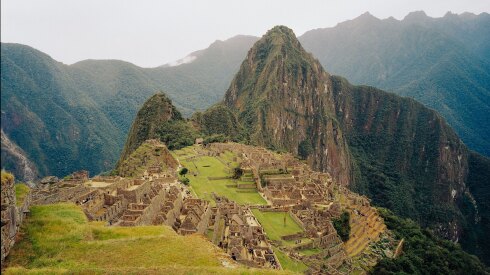Visiting the famous Terracotta Army was on my bucket list, and I was lucky enough to see it recently. As I entered the first pit, I couldn’t believe my eyes. Right in front of me was the section holding the life-size terracotta warriors all lined up in Qin Dynasty formation. The first three rows were soldiers, which you can tell by their uniforms and hairstyle. Behind them stood charioteers and their horses, which were also full-size. The charioteers were recognizable by their arms and hands, which were positioned as if they were holding reins. Officers stood behind the charioteers. From my vantage point, I felt like a general standing with my army before me, waiting for my command.
More Recommendations
Warriors Await
Visiting the famous Terracotta Army was on my bucket list, and I was lucky enough to see it recently. As I entered the first pit, I couldn’t believe my eyes. Right in front of me was the section holding the life-size terracotta warriors all lined up in Qin Dynasty formation. The first three rows were soldiers, which you can tell by their uniforms and hairstyle. Behind them stood charioteers and their horses, which were also full-size. The charioteers were recognizable by their arms and hands, which were positioned as if they were holding reins. Officers stood behind the charioteers. From my vantage point, I felt like a general standing with my army before me, waiting for my command.
Terracotta Warriors, Xian China
Seeing the Terracotta Army was the undisputed highlight of my most recent visit to China. They were only discovered within the last 40 years when members of a local hill tribe discovered large chunks of masonry which, when examined by experts, prompted further investigation. The incredible site comprises life sized figures of over 8,000 soldiers, 130 chariots with 520 horses and 150 cavalry horses modeled on the Qin Emperor’s army. Most incredibly each soldier has a different expression. Undoubtedly one of the worlds greatest historical sites.
Visiting the Terra-cotta Warriors
For millennia, the story of the great tomb of Qin Shi Huang, the first emperor of China, was nothing more than myth. It wasn’t until 1974 when the digging of a well happened to unearth a buried terra-cotta warrior that Qin’s tomb became solid fact. The thousands of life-sized figures are now on display where they were found in a field in Xi’an. It is extremely crowded the day I visit. The other tourists swell around me as I enter the first pit—the largest of three archaeological digs on site. The pit appears to be covered in a giant airplane hangar, and the surging crowd crawls to a stop right at its entrance. Ahead of me are rows and rows of life-size terra-cotta men in marching formation. Sprinkled throughout the sprawling mass of men are terra-cotta horses and various weapons. Not all figures have been reassembled after their 2000 years underground, and I can see, farther back, broken clay pieces. It really is staggering to see the figures in person. It is said that no two faces are the same, and as I focus my lens on the statues, my camera’s face-detection system is lighting up. Little blue boxes appear over every terra-cotta head on my camera screen. The scope is difficult to comprehend. As I walk to the back of the building, I watch the eyes of the statues. Some have heads tilted to stare right back at me. The scale of the site rapidly overwhelms me, and I don’t feel very connected to the place. It is certainly worth visiting, but ultimately mind-boggling.
Museum of Qin Terracotta Warriors and Horses
Back in 1974, in a moment out of an Indiana-Jones movie, construction workers building a well struck something far greater than fresh water: They accidentally discovered one of the world’s most significant archeological sites. Researchers went to work, uncovering long corridors of clay figures, life-sized and standing in formations, numbering in the thousands. Each terracotta warrior has his own facial expression and rank, some with preserved bits of color—hinting that all were once arrayed in painted brilliance. Horses and chariots accompany them into battle. They were commissioned by Qin Shi Huang, who took the throne in 246 B.C., commissioned this eternal army at the age of 13, and went on to become the first emperor of China. The museum opened in 1979 and now you can see the three main pits, as well as other, smaller sites surrounding.



























